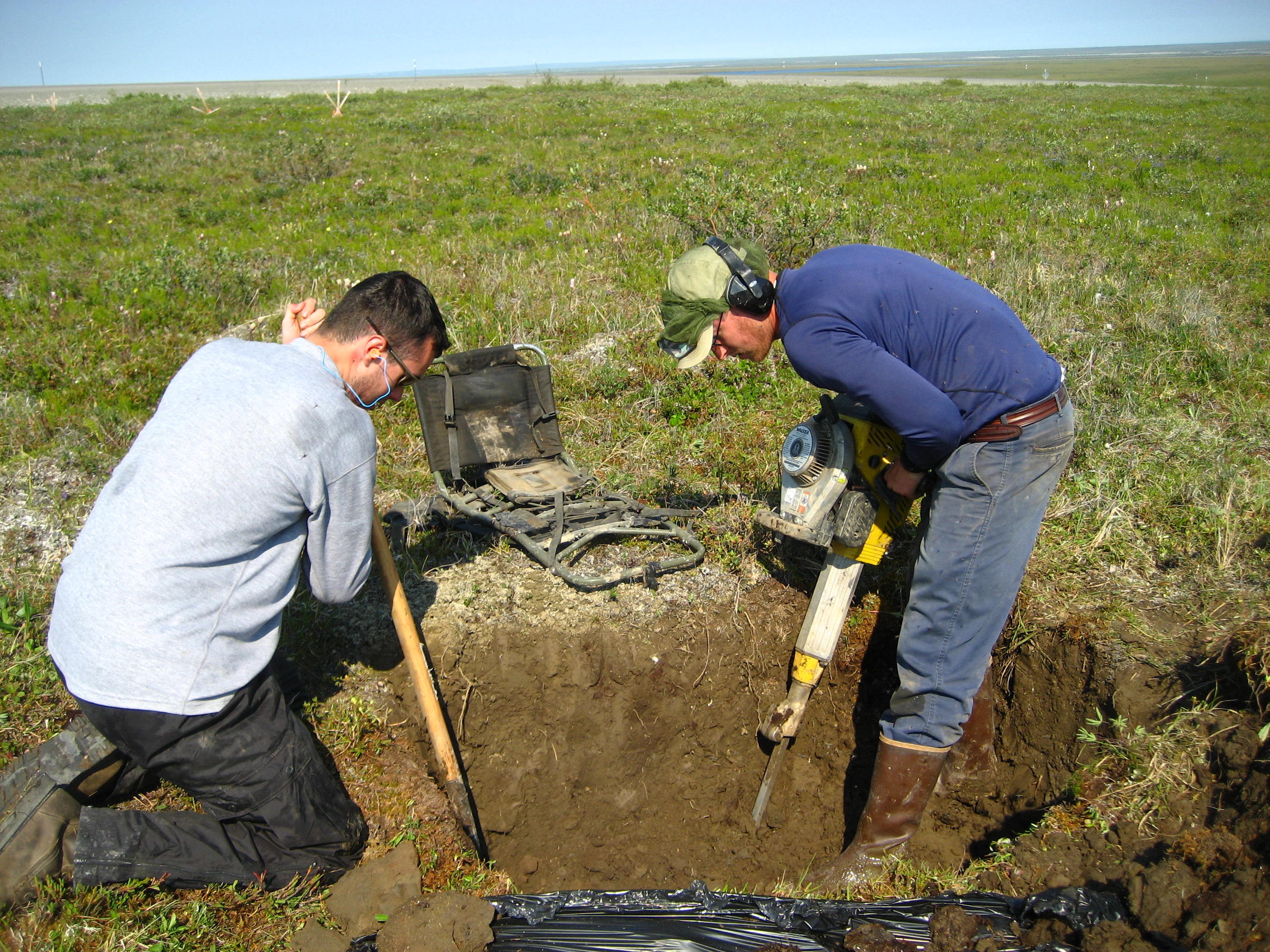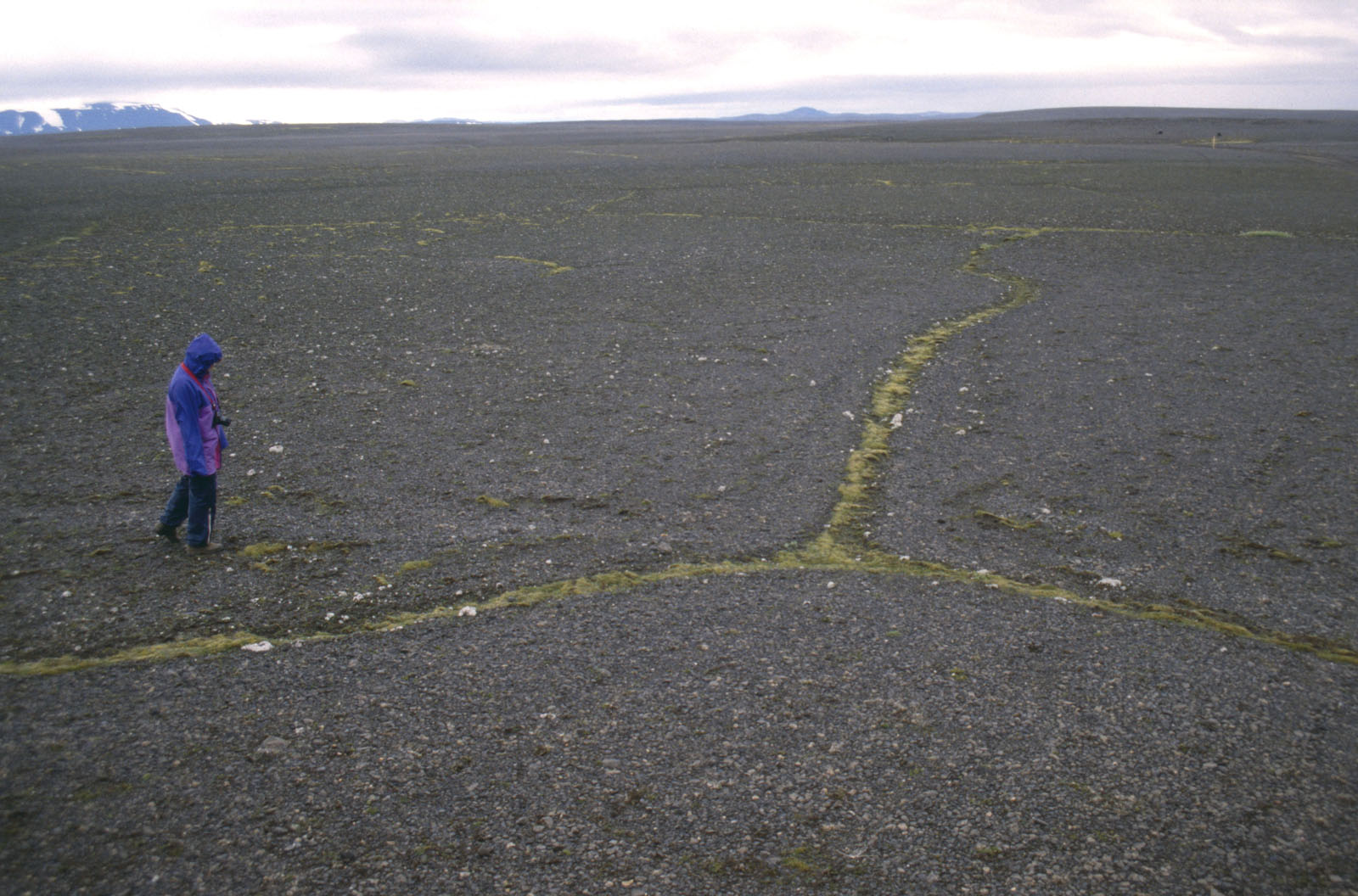|
McMurdo Dry Valleys
The McMurdo Dry Valleys are a row of largely Antarctic oasis, snow-free valleys in Antarctica, located within Victoria Land west of McMurdo Sound. The Dry Valleys experience extremely low humidity and surrounding mountains prevent the flow of ice from nearby glaciers. The rocks there are granites and gneisses, and glacial tills dot this bedrock landscape, with loose gravel covering the ground. It is one of the driest places on Earth, though there are several anecdotal accounts of rainfall within the Dry Valleys. The region is one of the world's most extreme deserts, and includes many features including Lake Vida, a saline lake, and the Onyx River, a meltwater stream and Antarctica's longest river. Although no living organisms have been found in the permafrost here, Endolithic lichen, endolithic Photosynthesis, photosynthetic bacteria have been found living in the relatively moist interior of rocks, and anaerobic bacteria, with a metabolism based on iron and sulfur, live under ... [...More Info...] [...Related Items...] OR: [Wikipedia] [Google] [Baidu] |
Mcmurdo Sound USGS Map
Vice-admiral (Royal Navy), Vice-Admiral Archibald William McMurdo (24 September 1812 – 11 December 1875) was a Scottish people, Scottish naval officer and polar explorer after whom Antarctica's McMurdo Sound, McMurdo Station, McMurdo Ice Shelf, McMurdo Dry Valleys and McMurdo–South Pole highway, McMurdo–South Pole Highway are named. Early life Archibald William McMurdo was born on 24 September 1812 in Scotland. He was the son of Lieutenant colonel (United Kingdom), Lieutenant Colonel Archibald McMurdo and grandson of John McMurdo, a Chamberlain (office), chamberlain at Drumlanrig Castle. Career McMurdo joined the Royal Navy on 6 October 1824, at the age of 12. He was promoted to lieutenant in 1836 for his skill and courage in saving the crew of a shipwrecked whaler from hostile Māori people, New Zealand natives. He achieved the rank of commander in 1843 and captain in 1851. His career included two discovery expeditions aboard HMS Terror (1813), HMS ''Terror'', the firs ... [...More Info...] [...Related Items...] OR: [Wikipedia] [Google] [Baidu] |
Permafrost
Permafrost () is soil or underwater sediment which continuously remains below for two years or more; the oldest permafrost has been continuously frozen for around 700,000 years. Whilst the shallowest permafrost has a vertical extent of below a meter (3 ft), the deepest is greater than . Similarly, the area of individual permafrost zones may be limited to narrow mountain summits or extend across vast Arctic regions. The ground beneath glaciers and ice sheets is not usually defined as permafrost, so on land, permafrost is generally located beneath a so-called active layer of soil which freezes and thaws depending on the season. Around 15% of the Northern Hemisphere or 11% of the global surface is underlain by permafrost, covering a total area of around . This includes large areas of Alaska, Canada, Greenland, and Siberia. It is also located in high mountain regions, with the Tibetan Plateau being a prominent example. Only a minority of permafrost exists in the Southern Hemi ... [...More Info...] [...Related Items...] OR: [Wikipedia] [Google] [Baidu] |
Katabatic Wind
A katabatic wind (named ) is a downslope wind caused by the flow of an elevated, high-density air mass into a lower-density air mass below under the force of gravity. The spelling catabatic is also used. Since air density is strongly dependent on temperature, the high-density air mass is usually cooler, and the katabatic winds are relatively cool or cold. Examples of katabatic winds include the downslope valley and mountain breezes, the piteraq winds of Greenland, the Bora in the Adriatic, the Bohemian Wind or ''Böhmwind'' in the Ore Mountains, the Santa Ana winds in southern California, the oroshi in Japan, or "the Barber" in New Zealand. Not all downslope winds are katabatic. For instance, winds such as the föhn and chinook are rain shadow winds where air driven upslope on the windward side of a mountain range drops its moisture and descends leeward drier and warmer. Mechanism A katabatic wind originates from the difference of density of two air masses located ... [...More Info...] [...Related Items...] OR: [Wikipedia] [Google] [Baidu] |
Arctic, Antarctic, And Alpine Research
''Arctic, Antarctic, and Alpine Research'' is a peer-reviewed scientific journal published by the Institute of Arctic and Alpine Research (University of Colorado Boulder). It covers research on all aspects of Arctic, Antarctic, and alpine environments, including subarctic, subantarctic, subalpine, and paleoenvironments. Jack D. Ives founded the journal in 1969 as ''Arctic and Alpine Research'' and the name was expanded to include the Antarctic in 1999. The editors-in-chief are Anne E. Jennings and Bill Bowman (University of Colorado Boulder). Abstracting and indexing The journal is abstracted and indexed in the Science Citation Index, Current Contents/Agriculture, Biology & Environmental Sciences, The Zoological Record, and BIOSIS Previews. According to the ''Journal Citation Reports'', the journal has a 2017 impact factor The impact factor (IF) or journal impact factor (JIF) of an academic journal is a type of journal ranking. Journals with higher impact factor values ... [...More Info...] [...Related Items...] OR: [Wikipedia] [Google] [Baidu] |
Patterned Ground
Patterned ground is the distinct and often symmetrical natural pattern of geometric shapes formed by the deformation of ground material in periglacial regions. It is typically found in remote regions of the Arctic, Antarctica, and the Outback in Australia, but is also found anywhere that freezing and thawing of soil alternate; patterned ground has also been observed in the hyper-arid Atacama Desert and on Mars. The geometric shapes and patterns associated with patterned ground are often mistaken as artistic human creations. The mechanism of the formation of patterned ground had long puzzled scientists but the introduction of computer-generated geological models in the past 20 years has allowed scientists to relate it to frost heaving, the expansion that occurs when wet, fine-grained, and porous soils freeze. Types Patterned ground can be found in a variety of forms. Typically, the type of patterned ground in a given area is related to the prevalence of larger stones in l ... [...More Info...] [...Related Items...] OR: [Wikipedia] [Google] [Baidu] |
Ice Wedge
An ice wedge is a crack in the ground formed by a narrow or thin piece of ice that measures up to 3–4 meters in length at ground level and extends downwards into the ground up to several meters. During the winter months, the water in the ground freezes and expands. Once temperatures reach −17 degrees Celsius or lower, the ice that has already formed acts like a solid and expands to form cracks in the surface known as ice wedges. As this process continues over many years ice wedges can grow, up to the size of a swimming pool. Ice wedges usually appear in a polygonal pattern known as ice wedge Polygon, polygons. The cracks can also be filled with materials other than ice, especially sand, and are then called sand wedges. Formation There are many theories that attempt to explain the origin of ice wedges but only one has been consistently supported by most prominent scientists: the thermal contraction theory. Thermal contraction theory The thermal contraction theory posits th ... [...More Info...] [...Related Items...] OR: [Wikipedia] [Google] [Baidu] |
Ross Sea
The Ross Sea is a deep bay of the Southern Ocean in Antarctica, between Victoria Land and Marie Byrd Land and within the Ross Embayment, and is the southernmost sea on Earth. It derives its name from the British explorer James Clark Ross who visited this area in 1841. To the west of the sea lies Ross Island and Victoria Land, to the east Roosevelt Island and Edward VII Peninsula in Marie Byrd Land, while the southernmost part is covered by the Ross Ice Shelf, and is about from the South Pole. Its boundaries and area have been defined by the New Zealand National Institute of Water and Atmospheric Research as having an area of . The circulation of the Ross Sea is dominated by a wind-driven ocean gyre and the flow is strongly influenced by three submarine ridges that run from southwest to northeast. The circumpolar deep water current is a relatively warm, salty and nutrient-rich water mass that flows onto the continental shelf at certain locations. The Ross Sea is covered ... [...More Info...] [...Related Items...] OR: [Wikipedia] [Google] [Baidu] |
East Antarctic Ice Sheet
The East Antarctic Ice Sheet (EAIS) lies between 45th meridian west, 45° west and 168th meridian east, 168° east longitudinally. It was first formed around 34 million years ago, and it is the largest ice sheet on the entire planet, with far greater volume than the Greenland ice sheet or the West Antarctic Ice Sheet (WAIS), from which it is separated by the Transantarctic Mountains. The ice sheet is around thick on average and is at its thickest point. It is also home to the geographic South Pole, South Magnetic Pole and the Amundsen–Scott South Pole Station. The surface of the EAIS is the driest, windiest, and coldest place on Earth. Lack of moisture in the air, high albedo from the snow as well as the surface's consistently high elevation results in the reported cold temperature records of nearly . It is the only place on Earth cold enough for atmospheric temperature inversion to occur consistently. That is, while the atmosphere is typically warmest near the surface and bec ... [...More Info...] [...Related Items...] OR: [Wikipedia] [Google] [Baidu] |
Secretariat Of The Antarctic Treaty
__NOTOC__ The Antarctic Treaty Secretariat (ATS) is a subsidiary body of the Antarctic Treaty Consultative Meeting (ATCM) and, as such, performs its duties under the ATCM's direction. The ATCM is the forum that brings together the Antarctic Treaty Consultative Parties, Non-Consultative Parties, Observers and Experts. The Antarctic Treaty was signed in 1959 and entered into force in 1961. The Secretariat is located at 757 Maipú Street, in the Autonomous City of Buenos Aires, Argentina. The government of Argentina provides the office where the Secretariat operates, and the Headquarters Agreement –signed in 2010, during ATCM XXXIII—establishes the relationship between the ATCM and the Argentine Republic regarding the operations of the Secretariat in Argentina. Mission The mission of the Secretariat is to assist the ATCM and the Committee for Environmental Protection (CEP) in performing their functions, with the aim of strengthening the Antarctic Treaty System and ensuring t ... [...More Info...] [...Related Items...] OR: [Wikipedia] [Google] [Baidu] |
Antarctic Specially Managed Area
An Antarctic Specially Managed Area (ASMA) is a protected area on the continent of Antarctica Antarctica () is Earth's southernmost and least-populated continent. Situated almost entirely south of the Antarctic Circle and surrounded by the Southern Ocean (also known as the Antarctic Ocean), it contains the geographic South Pole. ..., or on its adjacent islands. ASMAs are managed by the governments of Brazil, Poland, Ecuador, Peru, United States, New Zealand, Australia, Norway, Spain, United Kingdom, Chile, India, Russia, and Romania. The purpose of the ASMA sites are "to assist in the planning and coordination of activities within a specified area, avoid possible conflicts, improve cooperation between Antarctic Treaty Consultative Parties (ATCPs) and minimise environmental impacts. ASMAs may include areas where activities pose risks of mutual interference or cumulative environmental impacts, as well as sites or monuments of recognised historical value." Unlike the Antarc ... [...More Info...] [...Related Items...] OR: [Wikipedia] [Google] [Baidu] |
Taylor Glacier
The Taylor Glacier () is a glacier in Antarctica about long, flowing from the plateau of Victoria Land into the western end of Taylor Valley, north of the Kukri Hills. It flows to the south of the Asgard Range. The middle part of the glacier is bounded on the north by the Inland Forts and on the south by Beacon Valley. History The Taylor Glacier was discovered by the British National Antarctic Expedition (BrNAE, 1901–1904) and at that time thought to be a part of Ferrar Glacier. The Western Journey Party of the Terra Nova Expedition, British Antarctic Expedition of 1910 determined that the upper and lower portions of what was then known as Ferrar Glacier are apposed, i.e., joined in Siamese-twin fashion north of Knobhead. With this discovery Robert F. Scott, Robert Falcon Scott named the upper portion for Thomas Griffith Taylor, geologist and leader of the Western Journey Party. Glaciology Research The Taylor Glacier has been the focus of a measurement and modeling effor ... [...More Info...] [...Related Items...] OR: [Wikipedia] [Google] [Baidu] |







